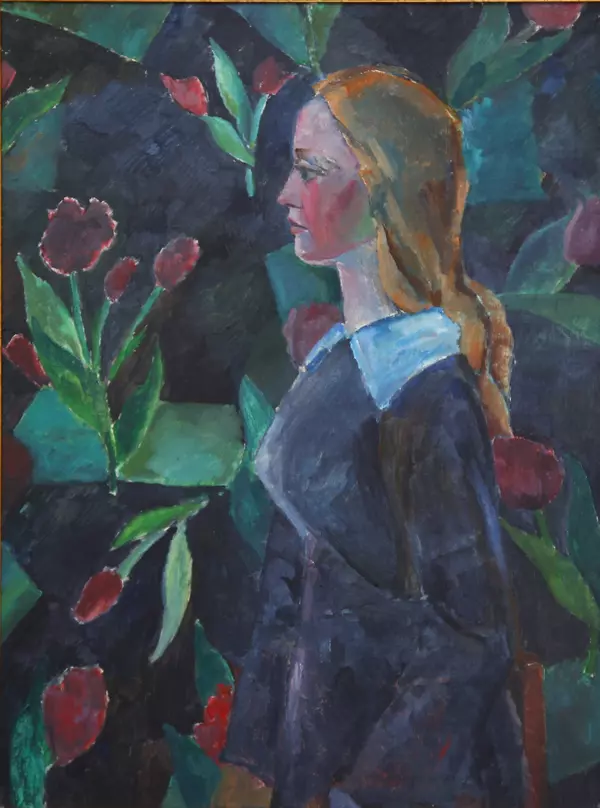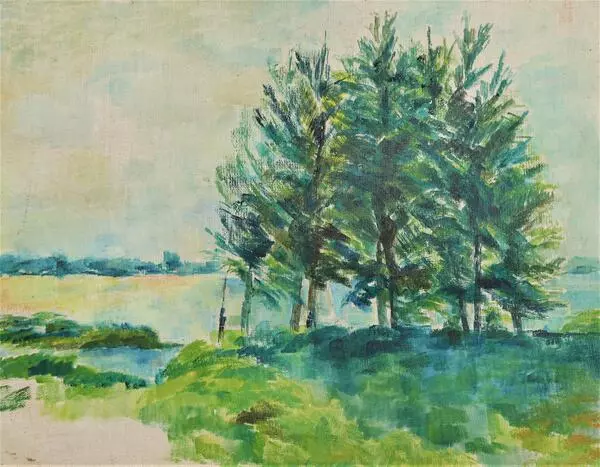Vladimir Viktorovich Zhuravlyov was born in 1949 in Khabarovsk Krai. In the 1960s, when his family moved to Novgorod, he became a student of Tamara Alexandrovna Gavrilova, a teacher at an art studio, and began his artistic career.
Zhuravlyov studied sculpture at the Secondary Art School managed of the Ilya Repin Leningrad State Institute of Painting, Sculpture and Architecture. Later he graduated from the Institute as well.
His mentors were Valentina Nikolaevna Kitaygorodskaya, Mikhail Konstantinovich Anikushin, Igor Vsevolodovich Krestovsky and other artists. After his return to Novgorod in the early 1970s, Vladimir Viktorovich devoted himself to teaching at a children’s art school and working on sculptures.
His works were displayed at regional, interregional and republican exhibitions. His busts were especially highly recognized. In the 1980s, Zhuravlyov turned to the genre of monumental sculpture.
Painting played a different, deeply personal role in the life of Vladimir Viktorovich. The presented picture shows the southern corner of the Novgorod Kremlin with the white church consecrated in the name of the holy warrior and martyr Andrew Stratelates.
In 1167–1173, a church of the Holy Princes Boris and Gleb with three apses and six columns stood at this site, its southern aisle was consecrated in the name of Andrew Stratelates. The church was damaged in a fire in 1405 that started in the People’s End of the city (Veliky Novgorod was divided into boroughs, or “ends”). In 1441, Archbishop Evfimy ordered the construction of a new cathedral on this site. The staircase tower of the Church of the Holy Princes Boris and Gleb was dismantled, and a new St. Andrew’s Chapel was built there.
In 1682, after the Swedish invasion, the church collapsed, only the St. Andrew’s remained intact. The church was not restored, instead it was dismantled, and the chapel became a church.
The eastern building (its northern side) and the walls of the western side of the 15th century have partially survived to this day. Brick, flagstone and shell rock from the banks of the Volkhov River were used to build them.
The distinctive features of the western narthex (the protruding archivolts, the arch itself and the triangular lintel) correspond to the architectural traditions of 15th-century Novgorod.
In 1947, the church had to be thoroughly repaired after it had been damaged during the Great Patriotic War.
In 1969, the old foundation of the staircase church was carefully examined under the guidance of Mikhail Konstantinovich Karger. A year later, the workshop of Grigory Mikhailovich Shtender took part in the restoration of the monument, which at that time had fallen into disrepair.
Today the church is open for public visits.
Zhuravlyov studied sculpture at the Secondary Art School managed of the Ilya Repin Leningrad State Institute of Painting, Sculpture and Architecture. Later he graduated from the Institute as well.
His mentors were Valentina Nikolaevna Kitaygorodskaya, Mikhail Konstantinovich Anikushin, Igor Vsevolodovich Krestovsky and other artists. After his return to Novgorod in the early 1970s, Vladimir Viktorovich devoted himself to teaching at a children’s art school and working on sculptures.
His works were displayed at regional, interregional and republican exhibitions. His busts were especially highly recognized. In the 1980s, Zhuravlyov turned to the genre of monumental sculpture.
Painting played a different, deeply personal role in the life of Vladimir Viktorovich. The presented picture shows the southern corner of the Novgorod Kremlin with the white church consecrated in the name of the holy warrior and martyr Andrew Stratelates.
In 1167–1173, a church of the Holy Princes Boris and Gleb with three apses and six columns stood at this site, its southern aisle was consecrated in the name of Andrew Stratelates. The church was damaged in a fire in 1405 that started in the People’s End of the city (Veliky Novgorod was divided into boroughs, or “ends”). In 1441, Archbishop Evfimy ordered the construction of a new cathedral on this site. The staircase tower of the Church of the Holy Princes Boris and Gleb was dismantled, and a new St. Andrew’s Chapel was built there.
In 1682, after the Swedish invasion, the church collapsed, only the St. Andrew’s remained intact. The church was not restored, instead it was dismantled, and the chapel became a church.
The eastern building (its northern side) and the walls of the western side of the 15th century have partially survived to this day. Brick, flagstone and shell rock from the banks of the Volkhov River were used to build them.
The distinctive features of the western narthex (the protruding archivolts, the arch itself and the triangular lintel) correspond to the architectural traditions of 15th-century Novgorod.
In 1947, the church had to be thoroughly repaired after it had been damaged during the Great Patriotic War.
In 1969, the old foundation of the staircase church was carefully examined under the guidance of Mikhail Konstantinovich Karger. A year later, the workshop of Grigory Mikhailovich Shtender took part in the restoration of the monument, which at that time had fallen into disrepair.
Today the church is open for public visits.





